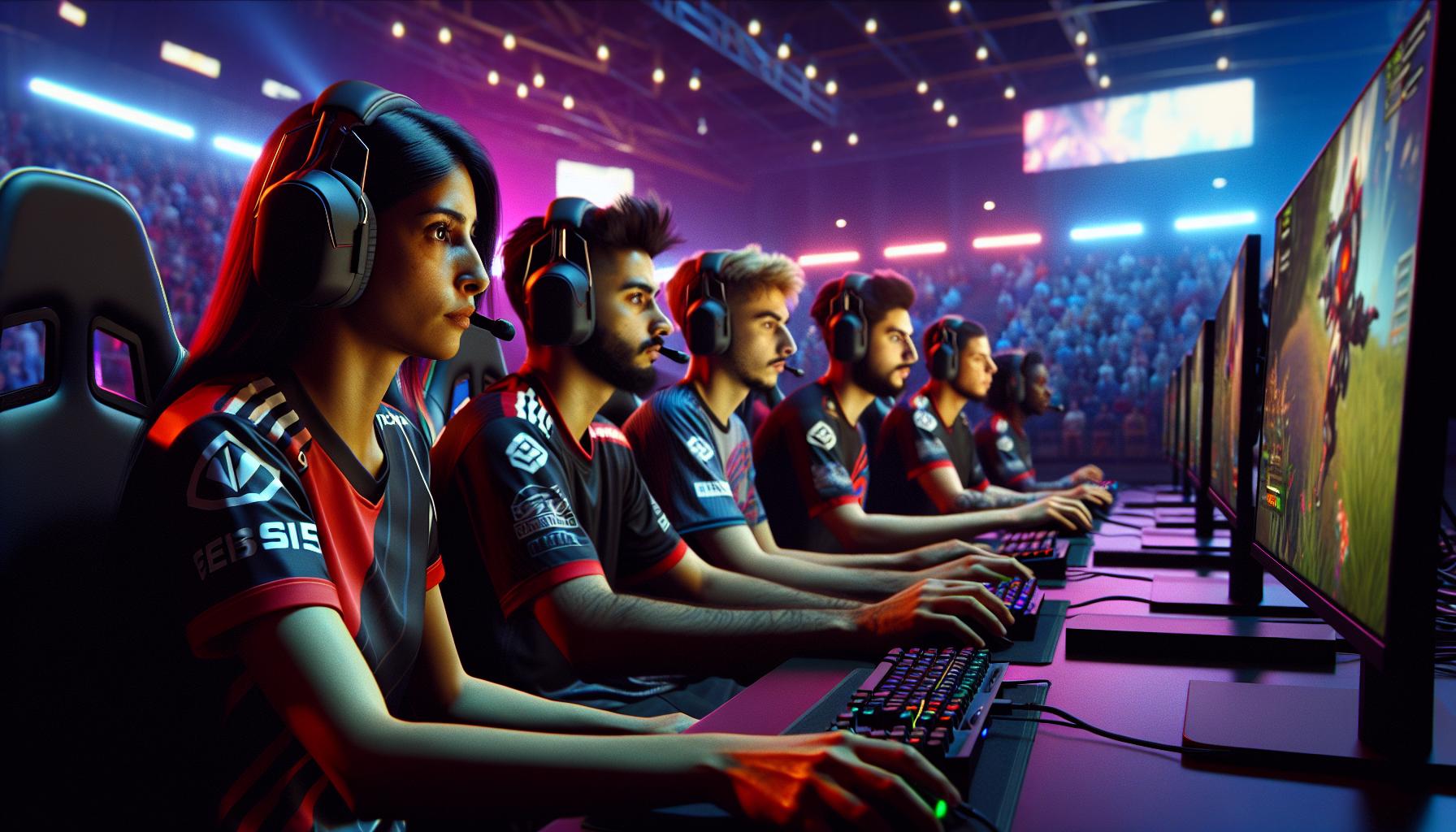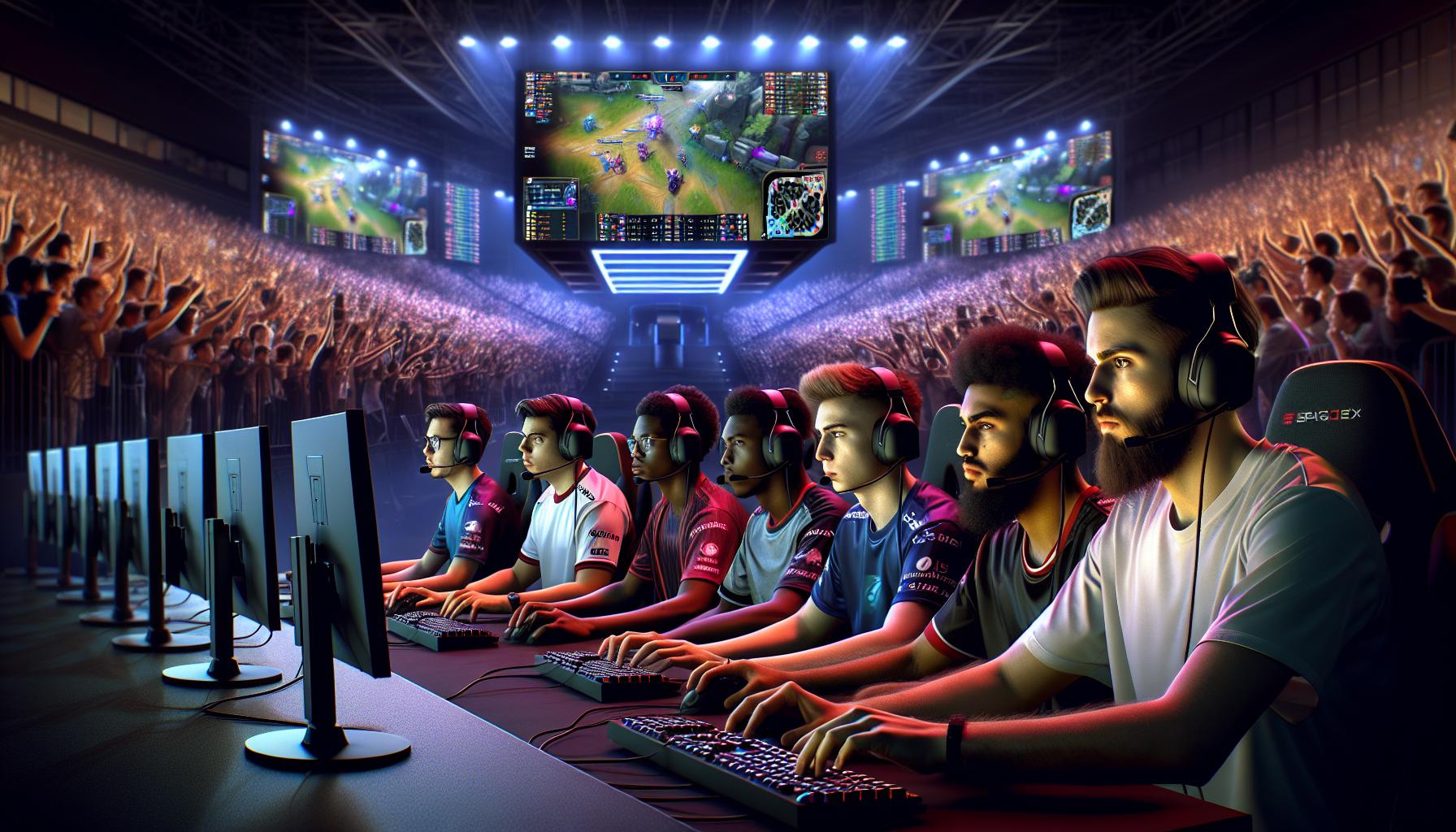Esports has exploded in popularity over the past decade, captivating millions of fans and players alike. Among the myriad of competitive gaming leagues, tier 1 esports stands out as the pinnacle of professional play. These elite leagues showcase the best teams and players, offering thrilling competitions that keep audiences on the edge of their seats.
In this article, I’ll dive into what defines tier 1 esports, the games that dominate this level, and the impact these competitions have on the gaming landscape. Whether you’re a seasoned fan or just starting to explore the world of competitive gaming, understanding tier 1 esports is essential to appreciating the skill and dedication that goes into becoming a top-tier player. Get ready to discover the excitement and intensity that make tier 1 esports a phenomenon.
Key Takeaways
Definition and Importance: Tier 1 esports represent the highest level of competitive gaming, showcasing elite players and teams while significantly influencing the gaming ecosystem and driving engagement.
Popular Titles: Prominent tier 1 esports games include “League of Legends,” “Counter-Strike: Global Offensive,” “Dota 2,” “Valorant,” and “Overwatch,” each with unique gameplay and strategic elements.
Characteristics of Organizations: Tier 1 esports organizations are defined by strong brand recognition, lucrative sponsorships, and partnerships with major global brands, enhancing their competitiveness and visibility.
Competitive Landscape: Major tournaments like The International and the League of Legends World Championship attract top talent and massive viewership, amplifying the thrill and prestige associated with tier 1 esports.
Future Trends: Advancements in technology, such as AI and VR, alongside predictions of increased viewership and sponsorship growth, indicate a promising future for tier 1 esports, elevating its status in mainstream entertainment.
Tier 1 Esports
Tier 1 esports represent the pinnacle of competitive gaming, showcasing the best players and teams across prominent titles. This section delves into the definition and importance of tier 1 esports within the broader gaming ecosystem.
Definition of Tier 1 Esports
Tier 1 esports comprise high-profile competitions featuring top-tier organizations and elite players. These events typically attract significant viewership numbers, substantial sponsorship deals, and large prize pools. Popular titles in this category include games like “League of Legends,” “Counter-Strike: Global Offensive,” and “Dota 2.” Only the most skilled teams qualify for these tournaments, exemplifying the highest standards of gameplay.
Importance in the Esports Ecosystem
Tier 1 esports play a crucial role in shaping the overall landscape of competitive gaming. They drive visibility, attracting both casual and hardcore fans. Major tournaments foster community engagement, creating a vibrant atmosphere around gaming culture. Additionally, tier 1 events influence player development, as aspiring professionals strive to reach these prestigious levels of competition. The success of tier 1 esports elevates the industry’s profile, paving the way for growth in sponsorships, investments, and viewership, thus strengthening the entire esports ecosystem.
Popular Tier 1 Esports Titles

Tier 1 esports titles capture the attention of millions worldwide, serving as benchmarks for competitive gaming. These games not only showcase elite skills but also drive community and industry growth.
Overview of Leading Games
Leading esports titles represent various genres, each with its unique appeal. Some of the most prominent games include:
- League of Legends: A multiplayer online battle arena (MOBA) game featuring strategic gameplay and diverse characters.
- Counter-Strike: Global Offensive: A tactical first-person shooter that emphasizes teamwork and precision.
- Dota 2: Another MOBA, known for its complex mechanics and strategic depth involving two teams battling to destroy the opposing base.
- Valorant: A tactical first-person shooter that combines character abilities with traditional shooting mechanics.
- Overwatch: A team-based shooter celebrated for its diverse hero characters and cooperative gameplay.
These games consistently attract top talent and major sponsorships, solidifying their position in the tier 1 esports landscape.
Comparative Analysis of Genres
Each esports genre brings distinct experiences and challenges:
- MOBA Games: Games like League of Legends and Dota 2 require strategic planning and teamwork. Players must master various heroes and adapt strategies based on opponents’ actions.
- First-Person Shooters (FPS): Titles like Counter-Strike: Global Offensive and Valorant focus on reflexes, aiming skills, and strategic positioning. These games often have a steep learning curve.
- Team-Based Shooters: Overwatch emphasizes collaboration and character abilities. Teams coordinate to achieve objectives, balancing offense and defense effectively.
Understanding these genres highlights the diversity in gameplay and strategies that define tier 1 esports. Each title not only attracts dedicated fans but also cultivates a unique competitive environment.
Characteristics of Tier 1 Esports Organizations

Tier 1 esports organizations exhibit several defining characteristics that set them apart from other competitive gaming entities. These features contribute to their success and influence within the gaming community.
Brand Value and Recognition
Brand value and recognition play crucial roles in tier 1 esports organizations. Strong branding fosters loyalty among fans and helps establish an identity that resonates in the esports landscape. These organizations often boast iconic logos, memorable team names, and established histories that enable them to stand out. For instance, organizations like Team Liquid and Fnatic are instantly recognizable due in part to their success in various titles and their investment in community engagement. As these brands gain prominence, their players also benefit, receiving individual recognition and opportunities for personal branding.
Sponsorships and Partnerships
Sponsorships and partnerships significantly impact tier 1 esports organizations. These entities attract lucrative deals from global brands looking to tap into the growing esports audience. Organizations frequently collaborate with companies across various sectors, including technology, beverage, and apparel. For example, partnerships with brands like Intel and Red Bull provide vital resources for teams and contribute to their competitive edge. Such collaborations not only enhance financial stability but also elevate the visibility of esports as a legitimate industry, further solidifying the presence of tier 1 organizations in the market.
Competitive Landscape

The competitive landscape of tier 1 esports features some of the most prestigious tournaments and leagues, drawing significant attention and talent from around the globe. These events highlight the relentless competition among elite teams and players striving for greatness.
Major Tournaments and Leagues
Major tournaments like The International for “Dota 2” and the League of Legends World Championship stand at the forefront of tier 1 esports. These events regularly showcase the best teams and offer substantial prize pools, often exceeding $30 million. Regularly, these tournaments attract millions of viewers, both online and in-person, creating thrilling experiences for fans. Leagues such as the ESL Pro League and BLAST Premier for “Counter-Strike: Global Offensive” operate on a seasonal basis, bringing continuous action and engagement throughout the year. These structured competitions enhance rivalry, offering teams opportunities to build legacies and fans to engage with their favorite players.
Top Teams and Players
Dominant teams within tier 1 esports consistently display skill, strategy, and teamwork. Organizations like Team Liquid and T1 lead the way in notoriety and performance across multiple titles. Players such as s1mple from NATUS VINCERE and Faker from T1 exemplify excellence in their respective games, earning recognition as some of the best esports athletes worldwide. Their individual achievements contribute to their teams’ overall success and elevate the status of esports as a legitimate sporting endeavor. The competitive drive among teams and the prowess of individual players shape the ever-evolving dynamics of tier 1 esports, fueling both personal and organizational ambition.
Future Trends in Tier 1 Esports
The future of tier 1 esports looks promising, driven by technological advancements and evolving audience engagement strategies. These trends not only enhance the competitive scene but also reshape the overall gaming landscape.
Emerging Technologies and Innovations
Emerging technologies are transforming tier 1 esports through improved player experiences and enhanced viewer engagement. Artificial intelligence (AI) plays a critical role in analyzing gameplay, supporting players in strategic planning. Virtual reality (VR) and augmented reality (AR) deepen immersion, allowing fans to feel like they’re part of the action. Streaming technology continues to evolve, with 4K resolution and ultra-low latency ensuring viewers enjoy high-quality broadcasts with minimal delays. Moreover, blockchain technology introduces new monetization avenues through digital collectibles and in-game assets. This combination of innovations enhances competition and engagement across the esports spectrum.
Predictions for Growth and Development
Growth in tier 1 esports is set to accelerate, with industry experts forecasting a sustained increase in viewership and sponsorships. Market research predicts global esports revenues will surpass $1.5 billion by 2025, fueled by an expanding audience base and rising media rights deals. Increased university involvement in esports programs will nurture talent and elevate professional pathways. Additionally, mainstream media coverage will broaden exposure, drawing in casual fans and validating esports as a legitimate entertainment form. Competitive gaming’s integration into cultural events, such as the Olympics, signals its evolution and mainstream acceptance, propelling the entire ecosystem forward.
Vibrant Ecosystem
Tier 1 esports is more than just a competitive scene; it’s a vibrant ecosystem that shapes the future of gaming. As I look at the incredible growth and evolution of these elite leagues, I’m excited about the direction they’re heading. The combination of top-tier talent, innovative technology, and increasing mainstream recognition is driving esports into new territories.
With passionate fans and dedicated players, tier 1 esports continues to redefine entertainment. I’m eager to see how this dynamic landscape evolves, especially as it gains traction in cultural events and mainstream media. The journey is just beginning, and I can’t wait to be part of it as it unfolds.